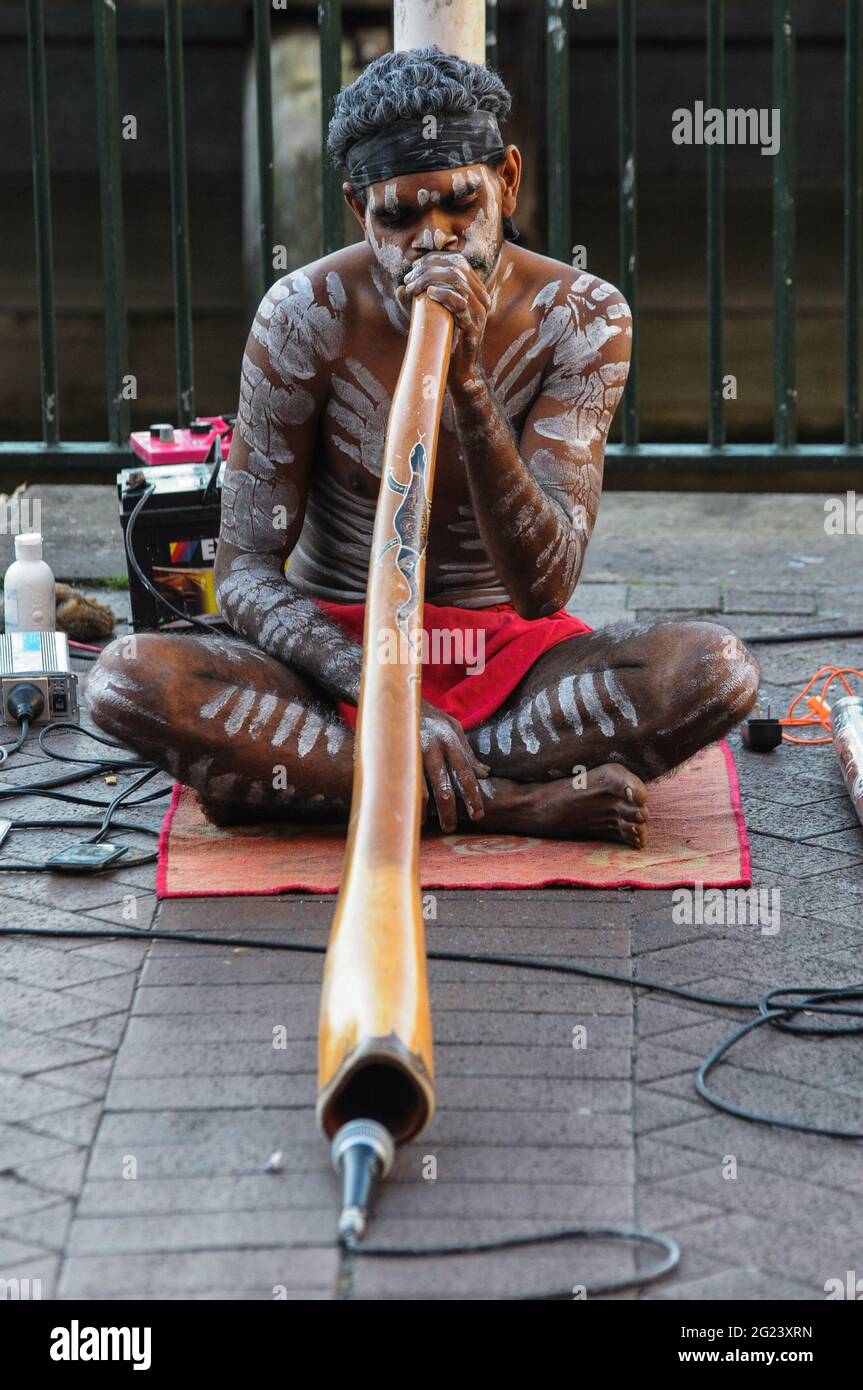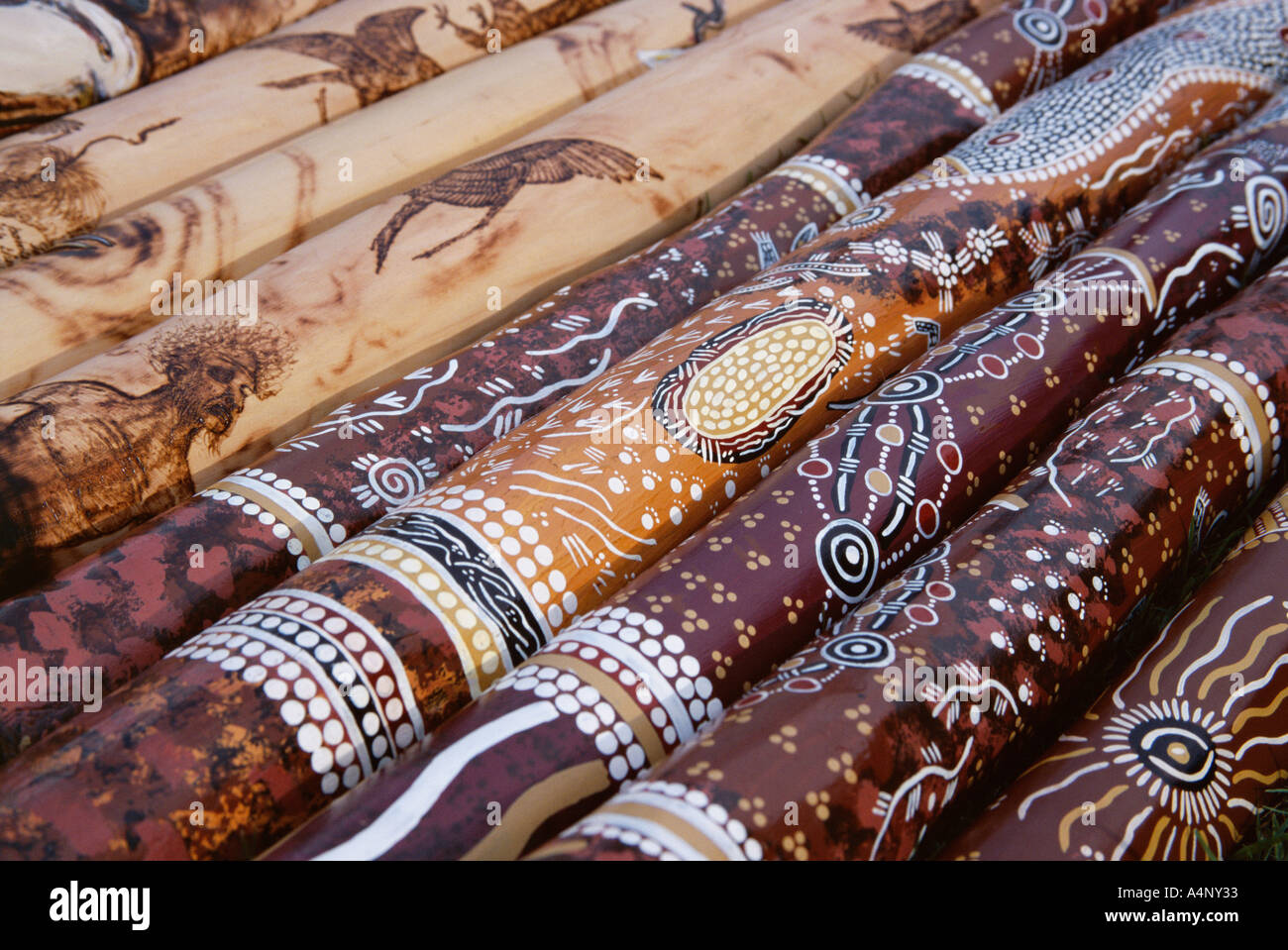The Rhythms of the Land: Exploring the Diverse World of Australian Aboriginal Musical Instruments
The Rhythms of the Land: Exploring the Diverse World of Australian Aboriginal Musical Instruments

Australia’s ancient landscape is not only a breathtaking sight, but also a source of profound cultural expression. For millennia, Aboriginal Australians have used music as a powerful tool for storytelling, ceremony, and connection to their ancestral lands. Their musical instruments, crafted from natural materials and imbued with deep spiritual significance, are a testament to their ingenuity and artistry. This article delves into the fascinating world of Aboriginal musical instruments, exploring their diverse forms, unique sounds, and the cultural context that gives them meaning.
A Tapestry of Sounds: The Diverse Instruments of Aboriginal Australia
Related Articles: The Rhythms of the Land: Exploring the Diverse World of Australian Aboriginal Musical Instruments
- The Lingua Franca Of Down Under: Exploring Australia’s Official Language
- Unmasking The Tapestry: A Journey Through The Aboriginal Australia Map
- The Symphony Of The Land: Exploring The Communication Instruments Of Aboriginal Australia
- The Resilient Giants: Exploring The Iconic Trees Of The Australian Outback
- The Didgeridoo: Australia’s Iconic National Instrument
The vastness of the Australian continent is reflected in the diversity of Aboriginal musical instruments. From the haunting melodies of the didgeridoo to the rhythmic beats of the clap sticks, each instrument tells a unique story and serves a specific purpose within the rich tapestry of Aboriginal culture.
1. The Didgeridoo: The Iconic Voice of the Land
The didgeridoo, or yidaki, is perhaps the most recognizable Aboriginal instrument worldwide. This long, hollow tube, traditionally made from eucalyptus wood, produces a distinctive droning sound that evokes the vastness of the Australian outback. The didgeridoo is not just a musical instrument but a powerful symbol of connection to the land and its spirits.
- Construction and Technique: The didgeridoo is played by buzzing the lips against the mouthpiece, creating a continuous, resonant sound. The length and shape of the instrument influence the pitch and tone.
- Cultural Significance: The didgeridoo plays a crucial role in Aboriginal ceremonies and rituals, representing the connection between the spirit world and the physical world. It is often used in healing ceremonies and for storytelling.
- Beyond the Outback: The didgeridoo has gained international recognition and is now played by musicians worldwide. Its unique sound and cultural significance continue to fascinate and inspire.

2. The Clapsticks: The Rhythm of the Earth
Clapsticks, or k’gari, are simple yet versatile instruments made from hardwood sticks. They are played by striking them together, creating a percussive rhythm that echoes the heartbeat of the land. Clapsticks are an integral part of Aboriginal music and dance, used to accompany storytelling, ceremonies, and social gatherings.
- Construction and Technique: Clapsticks are usually made from hardwood, such as ironwood or eucalyptus, and are often decorated with intricate carvings. They are played by holding one stick in each hand and striking them together, creating a range of rhythms and patterns.
- Cultural Significance: Clapsticks are used to communicate stories, convey emotions, and create a sense of community. They are often used in conjunction with other instruments, such as the didgeridoo and the bullroarer.
- Modern Adaptations: Clapsticks have inspired contemporary musicians, who have incorporated their rhythmic sounds into a variety of genres, including jazz and world music.

3. The Bullroarer: The Voice of the Ancestors
The bullroarer, or turndun, is a wooden slat attached to a string that is whirled around the head, creating a loud, buzzing sound. This instrument is often used in ceremonies and rituals, representing the power of the ancestors and the spirits of the land.
- Construction and Technique: The bullroarer is typically made from hardwood, such as eucalyptus or ironwood, and is shaped to create a specific sound. It is whirled around the head using a string, producing a low, buzzing sound that can be heard for great distances.
- Cultural Significance: The bullroarer is a powerful symbol of ancestral power and is often used in ceremonies related to rainmaking, initiation rites, and the summoning of spirits. Its sound is said to be the voice of the ancestors, guiding and protecting the community.
- Modern Applications: The bullroarer has been adapted by contemporary artists and musicians, who have explored its unique sound and cultural significance in their work.

4. The Kulindil: The Sweet Song of the Bush
The kulindil, or yira, is a small, handheld instrument made from a piece of wood or bone. It is played by rubbing a stick against a groove on the instrument, producing a high-pitched, whistling sound. The kulindil is used for a variety of purposes, including communication, entertainment, and ceremonies.
- Construction and Technique: The kulindil is typically made from a small piece of wood or bone, with a groove carved into it. A stick is then rubbed against the groove, creating a whistling sound. The pitch of the sound can be adjusted by pressing on the instrument.
- Cultural Significance: The kulindil is often used for communication over long distances, as its high-pitched sound can travel through the bush. It is also used for entertainment and in ceremonies related to healing and fertility.
- Modern Adaptation: The kulindil has inspired contemporary musicians, who have incorporated its unique sound into their compositions, blending traditional techniques with modern instrumentation.
5. The Boomerang: Beyond Hunting, a Musical Tool
While primarily known for its hunting prowess, the boomerang also holds a place in Aboriginal music. Some boomerangs, known as "singing boomerangs," are specifically designed to produce a unique sound when thrown. This sound, a combination of wind and wood, adds a distinctive element to Aboriginal ceremonies and performances.
- Construction and Technique: Singing boomerangs are crafted with specific shapes and curves that generate a specific sound when thrown. The sound produced is a combination of the wind whistling through the boomerang’s curves and the wood vibrating.
- Cultural Significance: Singing boomerangs are used in ceremonies and performances, adding a unique sonic element to the traditional music and dance. The sound of the boomerang is often associated with the spirits of the land and the ancestors.
- Modern Interpretations: Contemporary artists and musicians have explored the sonic potential of the boomerang, using its unique sound in experimental music and performance art.
The Enduring Legacy of Aboriginal Musical Instruments
These instruments are not just tools for making music; they embody the spirit of the land, the stories of the ancestors, and the interconnectedness of all things. Their unique sounds and cultural significance have captivated audiences worldwide, fostering appreciation for Aboriginal culture and its profound connection to the natural world.
Beyond the Sounds: The Cultural Context of Aboriginal Music
Aboriginal music is not simply a collection of sounds; it is a powerful expression of culture, spirituality, and connection to the land. The instruments are not just tools but extensions of the people who create and play them.
- Storytelling and Ceremony: Music plays a vital role in Aboriginal storytelling and ceremonies. Instruments are used to convey stories of the ancestors, the creation of the land, and the laws that govern the community.
- Healing and Ritual: Music is also used in healing ceremonies, to cleanse the body and spirit and to connect with the ancestral spirits. The sounds of the instruments are believed to have a therapeutic effect, promoting harmony and balance.
- Community and Belonging: Music is a powerful tool for building community and fostering a sense of belonging. It brings people together, creating a shared experience that transcends language and cultural differences.
The Future of Aboriginal Music
Today, Aboriginal musicians are actively preserving and revitalizing their traditional music, blending it with contemporary influences to create new and exciting sounds. This fusion of tradition and innovation is ensuring that the rich heritage of Aboriginal music continues to thrive for generations to come.
FAQ: Australian Aboriginal Musical Instruments
1. What is the most famous Aboriginal musical instrument?
The didgeridoo, also known as the yidaki, is the most recognizable Aboriginal instrument worldwide.
2. What are some other common Aboriginal musical instruments?
Other common instruments include the clap sticks, the bullroarer, the kulindil, and the singing boomerang.
3. What is the cultural significance of Aboriginal musical instruments?
Aboriginal musical instruments are not just tools for making music; they embody the spirit of the land, the stories of the ancestors, and the interconnectedness of all things.
4. How are Aboriginal musical instruments used in ceremonies?
Instruments play a vital role in ceremonies, conveying stories of the ancestors, the creation of the land, and the laws that govern the community. They are also used for healing, cleansing, and connecting with ancestral spirits.
5. How is Aboriginal music evolving today?
Aboriginal musicians are actively preserving and revitalizing their traditional music, blending it with contemporary influences to create new and exciting sounds.
Conclusion
The world of Aboriginal musical instruments is a captivating journey into the heart of Australian culture. These instruments are not just tools for making music; they are vessels of history, spirituality, and connection to the land. As we listen to their unique sounds, we are transported to a world where music is a language, a bridge between the past and the present, and a testament to the enduring spirit of Aboriginal Australia.

Closure
Thus, we hope this article has provided valuable insights into The Rhythms of the Land: Exploring the Diverse World of Australian Aboriginal Musical Instruments. We appreciate your attention to our article. See you in our next article!


